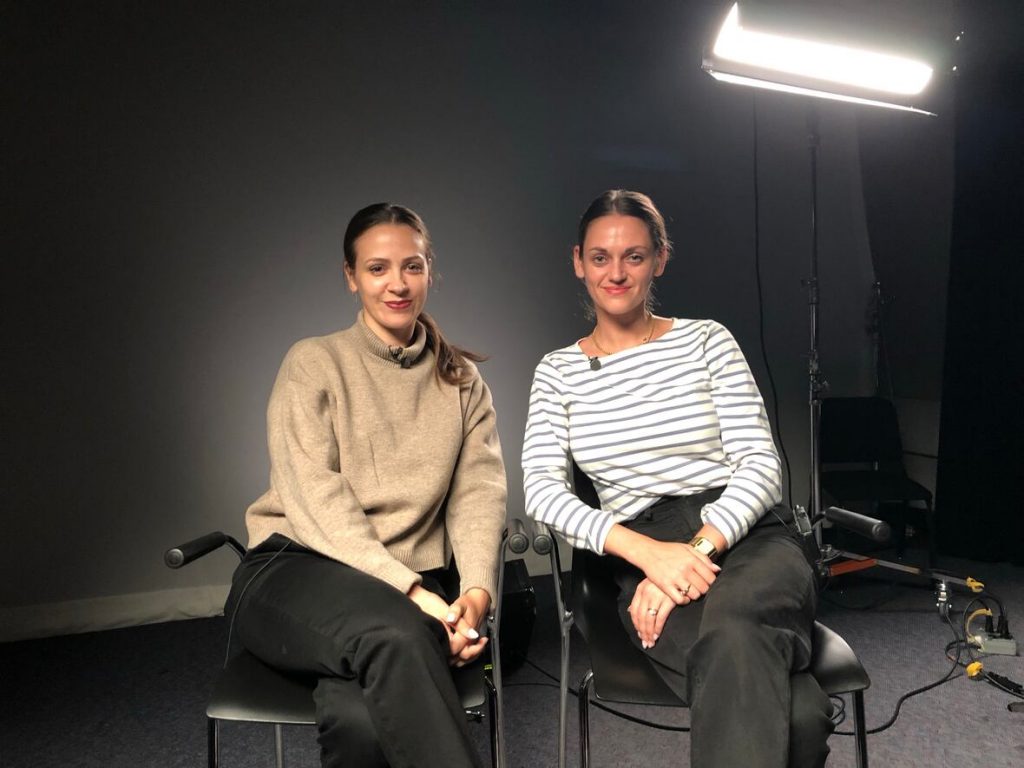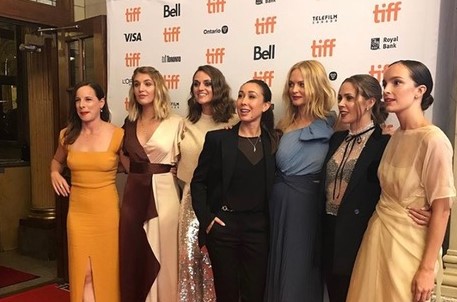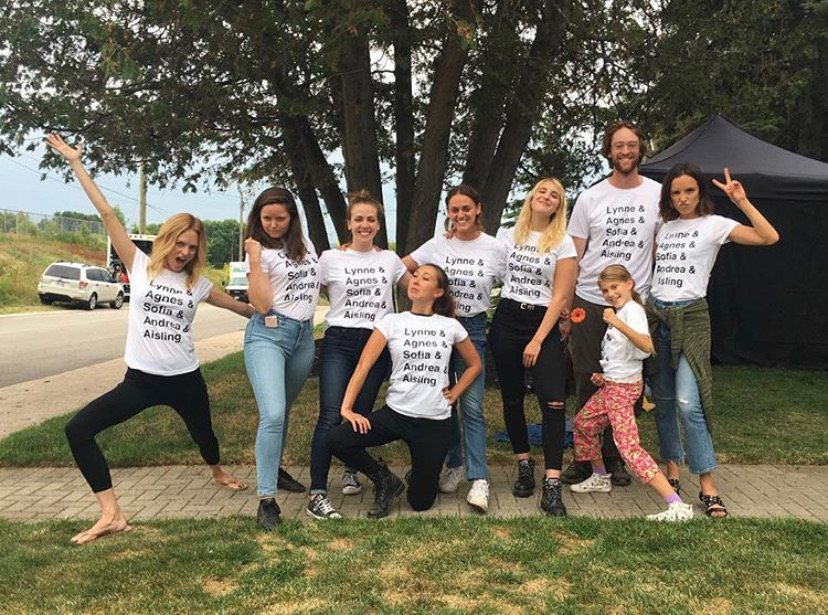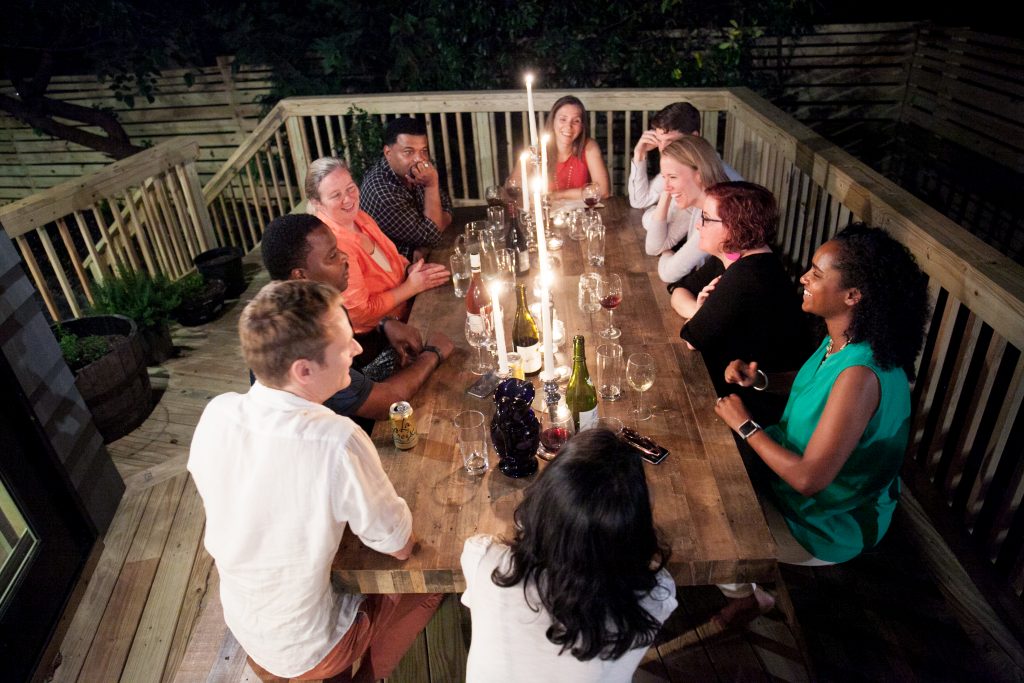
$5.5 Billion Investment Required To Prevent Collapse of Emerging Women’s Entrepreneurship Sector
“We weren’t offered a seat at the
table, so we created our own.” — Nancy Wilson, Executive Director, CanWCC
The post What We Heard Report: Closing the Gap – Intersectional Perspectives for Realizing Economic Justice in Canada appeared first on LiisBeth.
]]>The post What We Heard Report: Closing the Gap – Intersectional Perspectives for Realizing Economic Justice in Canada appeared first on LiisBeth.
]]>The post Gaming for a Greener Future appeared first on LiisBeth.
]]>The post Gaming for a Greener Future appeared first on LiisBeth.
]]>The post The Apprenticeship of a Priestess appeared first on LiisBeth.
]]>The post The Apprenticeship of a Priestess appeared first on LiisBeth.
]]>The post 2022:<br>A TELESCOPIC VIEW appeared first on LiisBeth.
]]>The post 2022:<br>A TELESCOPIC VIEW appeared first on LiisBeth.
]]>The post Shut Out and Shut Up: Canada’s Feminist Recovery Plan Excludes Voices of Women Entrepreneurs appeared first on LiisBeth.
]]>The post Shut Out and Shut Up: Canada’s Feminist Recovery Plan Excludes Voices of Women Entrepreneurs appeared first on LiisBeth.
]]>The post The Feminist Recovery Strategy appeared first on LiisBeth.
]]>The post The Feminist Recovery Strategy appeared first on LiisBeth.
]]>The post Decolonizing the Trading Post appeared first on LiisBeth.
]]>The post Decolonizing the Trading Post appeared first on LiisBeth.
]]>The post LiisBeth Playlist #11: ELECTION DAY USA appeared first on LiisBeth.
]]>The post LiisBeth Playlist #11: ELECTION DAY USA appeared first on LiisBeth.
]]>The post The Telling Stories of Babe Nation appeared first on LiisBeth.
]]>
INTERIOR. Emily and Lola clothing shop. Montreal. Summer, 2010.
LINDSAY TAPSCOTT (28), an unemployed University of Toronto English literature grad who recently moved to Montreal on a whim, enters the shop to drop off her CV. She is about to depart when the store clerk, KATIE BIRD NOLAN (21), aspiring actor working part-time to pay rent, calls after her: “Wait a sec, is your dad’s name John?”
Lindsay turns around nodding, and the moment becomes more surreal as Katie announces that her mom is Ingrid Bird, the woman who spent years travelling through Europe with Lindsay’s father, John Tapscott.
CUT TO:
EXTERIOR. Six months later. Balcony of a Mile End apartment in Montreal. 1:30 a.m.
A group of 20-something women are drinking wine, laughing, getting to know each other. Lindsay has moved in with two of Katie’s friends who needed a roommate. Lindsay and Katie discover they both went to theatre school, like the same movies. They laugh about their fluke encounter, as if they were kindred spirits brought together by the magic of Montreal. They joke about growing up listening to stories about each other’s parent, their travel adventures together. Three decades later, John and Ingrid have lost touch so it’s a fun surprise when Lindsay and Katie announce their chance encounter. Both parents insist they had a platonic relationship all those years ago.
Katie: “Can you imagine if we were long lost sisters?”
Lindsay: “Ha! Sounds like something out of a film.”
Is That How Film Companies Launch?
INTERIOR. Next day.
Katie excitedly types on her laptop. She immediately calls Lindsay: “I have a ridiculous idea for a web series. Do you want to write it with me?”
Lindsay, without missing a beat: “Sure. How hard can it be?”
FAST FORWARD three years to 2013. Katie and Lindsay are sharing an apartment in Toronto, dubbed “babe nation” by Katie’s boyfriend. They are writing and making short films on microbudgets of $2,500 or less, either crowdfunded or paid for out of pocket. They try out Babe Nation as the name for their fledgling film company as a semi-joke. But the more they use it, the better it sounds.
Babe Nation: It’s about their deep connection and friendship, their feminist values and work ethic, their off-beat sense of humour, and also their raison d’etre: to focus on women-centred stories and hack away at the disproportionate opportunities that flow to men in the male-dominated industry.
When actor Vanessa Matsui came to them looking for producers for her web series, Ghost BFF, they jumped on board. The tone and subject matter suited Babe Nation: a dark comedy about female friendship and suicide. They learned to raise “real money” by nailing the “Canadian film financing model” — a combination of government funding from places such as Telefilm Canada, Ontario Creates, and often tax credits, presales, grants, and advances. The budget for season one — nearly $250,000 — enabled multi-day shoots, higher production values and a hit show. The budget for season two of the series tripled, with funding coming in from the Bell Fund, Canadian Media Fund (CMF), and a sale to Shaftsbury Films and KindaTV.
Perfectionists by nature, Katie and Lindsay took the first few years to establish their brand and understand the types of stories they wanted to tell. Influences include author Zadie Smith and producers Christine Vachon and Margot Robbie. Katie describes their “brand” stories as “slightly left of centre but with a really strong statement.” Rather than sexy sleepover movies with girls in bikini lingerie, they produce stories for an intelligent female audience. Subject matter includes loss, depression, and belonging. Characters are three-dimensional — both strong and fallible, vulnerable and ballsy, sometimes despicable yet relatable. They are smart and funny, much like the producers. “For us it’s about attaching ourselves to projects that depict female stories the way women want to be depicted, not the way men have been depicting them forever.”
They also learned to trust the “weird particles” that surround their projects, the same energy that brought them together in the first place. And they established one abiding ground rule when choosing projects: Both must love the project to the point of obsession. “Producing is so hard,” says Katie. If you’re not obsessed with the thing, why would you do it?”
How to Fight Sexism in Show Biz?
CUT TO: CLOSE UP: Women in View On Screen 2019 Report. Analyzed data of funded projects finds, surprise, that the way to get more women in film and TV is to support more women producers. Calling it “The Producer Effect,” the report shows that a producer’s identity impacts who gets hired on a project. Women producers worked with more women on their team; women of colour producers worked with more women of colour; Indigenous producers worked with a far greater percentage of Indigenous women; men producers worked with more men. And male-produced projects received more funding.
Icky insider sexism sheds light on the impact of those stats on women.

INTERIOR. 2019. Berlin International Film Festival.
A large conference area bustling with industry types in stylish glasses, fashionable shoes, and egos that struggle to fit through the door.
CUT TO: Private meeting room.
The Babe Nation producers meet with an international SALES AGENT (55), bald, white, male. He stares at Katie’s chest the entire meeting. “I’m normally not interested in Canadian producers but you two look very exciting,” says the agent, his voice dripping with condescension.
Katie fakes a smile. Lindsay tries to tell the agent about their film. The guy cuts her off, his eyes now on Lindsay’s bright red lipstick: “Young ladies like you can have a very bright future you know.”
Lindsay tries to continue her pitch but the guy interrupts her again: “I mean look at you. This is Berlin! This is the big league!”
The two women read each other’s energy: Time to cut this short. “You’re right,” Katie says as they stand up to leave. “And we’re going to see more of the market now, thank you very much.”
CUT TO: INTERIOR. Meeting room. Toronto International Film Festival (TIFF), 2019.
Babe Nation has booked a meeting with another sales agent – also white, middle-aged, male. He’s running seriously late.
Katie paces the room: “We could have had another entire meeting with someone else by now.”
Lindsay sighs: “Maybe two! One for each of our films in this festival!”
Finally, a SLICK DUDE IN BLUE JEANS saunters in. He wears a smarmy grin and a shirt unbuttoned at the neck, one button too low. “Well, hello there,” he coos, sliding his glasses to the end of his nose. “Babe Nation, isn’t it?”
This time, the women don’t waste another minute. “Correct,” Katie says, “and we need to be somewhere else.”
CLOSE UP: Gender Parity Action Plan, announced by Telefilm Canada, 2016. Babe Nation seizes opportunity. They enter the industry on a wave of increasing support for women. The Telefilm plan aims to “prioritize projects whose key creatives (director and/or writer and/or producer) reflect the diversity of the country in terms of gender, Indigenous communities or cultural diversity.” Results of its gender parity initiatives for projects funded during the 2019/2020 fiscal year show an increase in funding for projects with women in key roles.
Babe Nation, through their own hustle and networking, sought out incredible mentors in seasoned pros Damon D’Oliveira and Christina Piovesan, who introduced them to financers and became executive producers for their two features, The Rest of Us and White Lie.
How to Level the Playing Field For All?
CLOSE UP: Reelworld Film Festival and Reelworld Screen Institute Changing the Narrative Report: 2020 Status of Canadian Black, Indigenous and People of Colour in Canada’s Screen-Based Production Section. The report suggests a disproportionate amount of funding goes to white creators, while BIPOC creators receive smaller amounts targeted at emerging talent. A lack of BIPOC professionals on selection committees for funding decisions is cited as one reason for the disparity.
Babe Nation took note, recognizing their own white privilege. While they have worked with a number of women of colour, the relationships were unplanned and coincidental. Says Lindsay: “When there’s a sense we’re not doing enough from a creator standpoint we push ourselves further to do more.” They signed the producer pledge to take immediate action to acknowledge and dismantle systemic racism in the Canadian film and television industry, by committing to radical change. For example, when considering a project now, Babe Nation has committed to thinking more critically about the storyteller. Women always take first priority, but they’re now diving deeper and asking, is this someone we haven’t heard from before? Is this a BIPOC artist who is short on opportunities, or a younger woman without a lot of experience? In terms of paying it forward, they are currently mentoring two young producers working on their first feature.
The Feminist Future: Exhausting? Exhilarating?

This year marks Babe Nation’s fifth as an incorporated company with substantial successes: two seasons of a major web series, two films at TIFF, two projects in advanced development, and four others in the works, including an adaptation of Bonjour Tristesse, Françoise Sagan’s 1950s controversial novel (it took three years to secure the rights) with Durga Chew-Bose writing the screenplay; and a feature by writer Alanna Francis about coercive abuse within female friendships.
So how are they handling the success? “Little sleep and a lot of anxiety,” Lindsay jokes. They are eager to hire more people, such as a junior producer and a business affairs person, but aren’t quite there, financially. A near goal is to score a studio deal so they can spend more time and energy in creative development instead of crunching numbers.
While the pair never set out to create a feminist company, they believe they grew into one as an extension of their own personal values. For writers and crewing a production, women are their first choice and often become lifelong friends and collaborators. To them, feminism is about equality, working collectively, and providing opportunities for people to voice their opinions in the creative development process. “We hear from the people we work with that our sets are an anomaly, which is equally lovely and horrifying,” says Lindsay.
Keeping their brand feminist-focused requires hands-on involvement in everything: chasing after scripts, optioning material, working on creative development with writers and directors, securing financing, marketing, and meeting with agents to sell their projects. “Our brand is as strong as it is because it is the two of us that have our hand in everything,” says Katie.
Still, their company name has raised eyebrows. How can Babe Nation be a feminist label? To the producers, the name is bold, tongue-in-cheek, even intimidating, invoking a place — a nation — where strong women unite, encourage and support each other. A place where women create generative work together, and tell stories that have gone untold for too long. But do they really want to be called Babe Nation when they’re 75 years old?
The two picture the scene, roaring with laughter.
FLASH FORWARD:
INTERIOR. Cannes Film Festival. 2060.
Katie and Lindsay stand in the wings of a glittering silver stage. They lean on their walkers as they sip champagne. The ANNOUNCER says, “And now, please welcome, the recipient of this year’s lifetime achievement award for change making cinema, Babe Nation!”
Lindsay peers at their company name, in big lights. “Did you really imagine we’d get here?”
Katie pushes a grey lock from her face. “Yes, of course.” Lindsay releases the brakes on her walker. “Me too.”
Publishers Note: Babe Nation is a participant in Canada’s first feminist accelerator program for womxn in digital media, Fifth Wave Labs. The Fifth Wave is a year-round program offered by CFC Media Lab and its partners to support the growth and development of women entrepreneurs in the digital media sector in southern Ontario. All enterprise founders in the Fifth Wave community are selected for both their potential and commitment toward weaving intersectional feminist ideals of equity and fairness into sustainable and scalable business growth strategies. Fifth Wave Initiative is committed to 30% participation by members of underrepresented groups. The Fifth Wave is a LiisBeth Media partner.
LiisBeth Media is a 100% womxn-owned and led, reader supported media enterprise. If you enjoyed this story and would like to see more, please consider becoming a $10-25 one time donor today! [direct-stripe value=”ds1577111552021″]
Related Reading:
Moving Pictures: What We Learned from Women Filmmakers at TIFF 2019
The post The Telling Stories of Babe Nation appeared first on LiisBeth.
]]>The post Change Makers: A unique residency supports women entrepreneurs on the front line of social innovation appeared first on LiisBeth.
]]>
In 2016, Atlanta earned the dubious distinction of having the highest rate of income inequality among big cities in the United States, after years of inching up the rankings. By then, Rohit Malhotra had decided to make it his life work to improve the city’s economic challenges, and he tapped into a unique source of talent to do so – women entrepreneurs.
Malhotra founded the Center for Civic Innovation (CCI) in 2014, after working on civic innovation initiatives in the Obama administration and studying how civic innovation could be a tool for addressing inequality in Atlanta at Harvard University’s John F. Kennedy School of Government. After hearing about CCI, perhaps the city’s most influential female entrepreneur, Spanx CEO and founder, Sara Blakely, reached out to Malhotra. She was interested in creating positive change in her community while also supporting female entrepreneurs and decided to partner with CCI to establish a residency to support civic-minded women entrepreneurs who are, as Blakely describes it, “the new guard of social change – operating at the intersection of entrepreneurship and philanthropy.”
The one-year residency provides financial and development support to entrepreneurs to cover salaries, health care and product development as well as coaching, mentorship and workspace in CCI’s offices. So far, 18 women leading startups have participated. This year, the residency will expand to include four men, though the women will still have an independent program backed by Blakely. Says Blakely, “I am inspired by the work they are doing and excited to see what their futures hold.”
So what is that work?
It’s about addressing “challenges that are at the root and the systemic reasoning for inequality to exist in the first place,” says Malhotra. And the residency measures its entrepreneurs by how much they achieve – not by financial indicators.
Consider the Dharma Project, which brings yoga to organizations that experience high levels of stress dealing with effects of income equality, such as police officers. “What we’re looking for is not just does that yoga studio sell a bunch of yoga mats because that’s how they can make a ton of money. What we’re interested in is: What has city hall changed about the way that they measure performance and reduction of stress of police officers?”
Cooking Up Big Ideas
I visited one of the Residency’s newest members, Jenn Graham, at her breezy home on a tree-lined street in Old Fourth Ward, the diverse Atlanta neighborhood where Martin Luther King, Jr. was born. Graham’s seven-week-old baby was sleeping upstairs as we sat downstairs at the kitchen table where Graham often holds staff meetings for her startup, Civic Dinners.
The 34-year-old founded the company after working with Atlanta Streets Alive, a project that closes some streets to cars for a few hours to allow people to socialize and experience the neighborhood without the buzz of traffic. People often live in bubbles, she says, that prevent them from meeting with others with different perspectives or backgrounds, especially true in a financially unequal city such as Atlanta. But she saw the power in connection. And that’s what gave birth to her idea for Civic Dinners.
Its goal is straight forward: Gather diverse people for meals to discuss issues that affect them such as mobility, transit, and livability in their community. “We launched this idea of let’s bring people together over food, just make it fun, make it social and have a conversation,” Graham says. She started experimenting with the idea in 2014, officially launched the company in 2017 and today it has 10 employees with clients ranging from cities, regional planning commissions, nonprofits and even thought leaders eager to tap into diverse perspectives.
Anyone can sign up to host a dinner for six to eight diverse community members. Hosts pick a time and location, either a restaurant or their home. Every guest pays for their meal, and Civic Dinners provides organizational tools to bring people together as well as questions to spark conversation. In short, it’s a civic focus group fueled by the joy of sharing a meal.
Conversations at the intimate dinner parties bring up unique thoughts, ideas, and opinions on topics of concern to clients, whether it’s aging or affordable housing. After the dinner, Civic Dinners emails hosts and guests to gather insights discussed over dinner. Civic Dinners may also follow up with interviews and prepares a report for each client with key findings.
Change in action
The Atlanta Regional Commission, a civic planning agency, typically gathers feedback from meetings and surveys with Atlanta residents. It turned to Civic Dinners to tap deeper into community concerns. Graham says feedback from dinners they organized influenced ARC to create a new bike-pedestrian plan.
“We can reach further and deeper in conversation and allow for real dialogue, real questions and inquiry,” says Graham. “It’s been useful in convincing some political leaders who may not hear these perspectives in their day-to-day life.”
In 2016, Civic Dinners piloted a series of dinners about the state of women, to connect women and foster civic leaders among them. Two who met at one of the dinners became business partners and started a women’s co-working space in Atlanta. The dinners proved so popular, Civic Dinners is looking to partner with an organization to relaunch them.
Value of shared leadership
The company operates much like the events they organize. Graham describes it as a flat structure with shared leadership. Employees work remotely but gather together for lunch every Thursday, alternating who hosts and leads the team meeting. Graham says great ideas can come from anyone and usually come up at these lunches.
Saba Long, the chief marketing and communications strategist, concurs. “We are very much a believer in team. There’s no one-upmanship. If I need support on something, I’m not afraid to ask for support. It’s very much a collective type of environment. We’re working together for a common good.”
Graham, who has just begun her CCI residency, will use the support to help her company scale up. So far the company has held more than 900 dinners worldwide; it plans to hit more than 1,000 for 2018 alone. Graham wants Civic Dinners to become the go-to platform for holding community conversations and make it easier for organizations, governments, universities and companies to more easily engage people in creating social change.
Teaching With a Difference In Mind
A member of the first residency class in 2017, Tiffany Ray, founded Generation Infocus in 2013 to offer equal and inspiring project-based learning opportunities to kids from pre-K through grade 12, introducing kids to careers and entrepreneurial aspirations they may never have considered.
The social-innovation educational company is headquartered in a renovated historic building in Hapeville, a city adjacent to Atlanta. It has class space, an art gallery, a wearable technology lab, and a garden that supports vegan cooking classes. They work with schools, run after school and summer programs, and recently launched a “Mobile Maker Space” in the form of a bus that travels to community groups and schools to teach STEAM —science, technology, engineering, art and mathematics.
Generation Infocus charges schools and libraries for programs while parents pay for after-school programs, but the company secured a grant from the county to offer free programming for children from lower income households.
Ray, 37, says the CCI residency allowed her to meet and work with other entrepreneurial women. “One of the great advantages to being in a collective like that was to have other people who are in the trenches, who have different challenges,” she says. “The conversations that happen around those classes can be phenomenal at times, so you’re really learning a lot being with other women.”
Importance of self care
She also took advantage of the residency’s wholistic approach to supporting entrepreneurs, which means not just taking care of business but taking care of yourself. She used the health-care stipend to hire a personal trainer and managed to shed 50 pounds during the program.
Ray also used her year to explore expanding Generation Infocus, through franchising and licensing. Her long-term goal is to create services, including curriculum and leadership development, for educators starting business ventures.
Ray has established a track record on that front already, hiring local talent who often suffer precarious employment—such as an actress to teach theater or a seamstress to teach in the wearable technology lab. That helps creatives diversify income and still have the time to build creative careers.
Ray also offers monthly management training for her employees to develop leadership skills. “Sometimes, they may not have the skillset. They never hired staff before. They never learned how to manage in crisis or how to provide customer service to parents who may be upset. So there are so many different facets to being a leader, particularly in education.” She says it’s relevant and critical to build up the people that work for Generation Infocus. “Because then they’re not stagnant. Then they want to stay and then they want to grow.”
April Singley started with the company as a theatre teacher in 2016 and is now a program director. She says Generation Infocus fosters teamwork and encourages its employees to share ideas. “Everybody works together very much as a team, but also we are looked at as individuals. We do recognize the strengths in our peers and our colleagues. We want to foster that, and we also encourage people to keep cultivating that, keep bringing their ideas forward.”
And that’s exactly the sort of values the founder of CCI, Malhotra, looks for in supporting CCI residents. He says each entrepreneur has designed her business model with feminist values at the core. “What I love about ventures we work with is they are values-driven first. Those are values that will not be compromised for financial returns.”
For more changing-making enlightenment:
LiisBeth asked company founders interviewed for Change Makers for books that inspired them. Tiffany Ray suggested EntreLeadership while Jenn Graham recommended Enlightened Power: How Women are Transforming the Practice of Leadership
The post Change Makers: A unique residency supports women entrepreneurs on the front line of social innovation appeared first on LiisBeth.
]]>